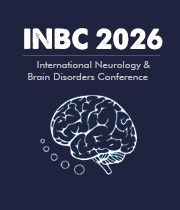Basal Ganglia Disease
A Basal Ganglia disease is a neurological disorder that results in abnormal shaking, decreased coordination, and problems with motor control. It is a disorder of the brain that affects movement and coordination. Basal ganglia diseases are most commonly caused by mutations in genes responsible for the production of proteins that are involved in proper brain function, though environmental factors may also play a role. The basal ganglia are a collection of structures within the brain, including the striatum, globus pallidus, thalamus, and subthalamic nucleus. These structures are primarily responsible for motor control and movement. Damage to the basal ganglia can cause abnormal movements, such as tremors or twitches. It can also cause difficulty with muscle coordination, such as difficulty walking or speaking. Depending on the severity of the damage, some people may experience changes in their ability to recognize faces, read, or comprehend spoken language. Basal ganglia diseases often present with difficulties in the ability to make voluntary movements, and a wide variety of symptoms may be seen, including rigidity, tremor, dystonia, akinesia, bradykinesia, chorea, and dystonia. Rigidity is characterized by stiff muscles, and tremor is an involuntary, rhythmic shaking, usually taking place in an arm or leg. Dystonia is a type of movement disorder in which certain muscle groups contract involuntarily, causing a twisting or sustained spasm of the muscle. Akinesia is the absence or limitation of voluntary movement, and bradykinesia is slowness of voluntary movement. Chorea is a type of involuntary movement that can result from damage to the basal ganglia and can take the form of quick, uncontrollable jerks. In addition to motor problems, basal ganglia diseases may also cause cognitive disturbances such as dementia, disorientation, and apathy. Additionally, a person may experience emotional changes, such as anxiety, depression, and emotional liability. Treatment for basal ganglia diseases may vary depending on the disease type, symptoms, and severity. Options may include drugs such as anticonvulsants, dopamine agonists, and monoamine-oxidase inhibitors, as well as surgery, physical therapy, and in some cases deep brain stimulation. Overall, basal ganglia diseases are complex disorders with a wide range of clinical features.

Joe Sam Robinson
Mercer University, United States
Robert B Slocum
University of Kentucky HealthCare, United States
George Diaz
Memorial Healthcare Systems, United States
Daniel Curry
Texas Children’s Hospital, United States
Zhenhuan Liu
Guangzhou University Chinese Medicine, China
Kiran Ghotra
Lake Erie College of Osteopathic Medicine, United States




Title : Atypical presentation of Juvenile myoclonic epilepsy in a 16-year-old female: A Case Report
George Diaz, Memorial Healthcare Systems, United States
Title : What we don’t know about hydrocephalus and It’s management
Daniel Curry, Texas Children’s Hospital, United States
Title : Artificial intelligence-driven DWI and FLAIR for the detection of early stroke changes: A systematic review
Shari L Guerra, The Medical City, Philippines
Title : Mapping neuroplasticity in occupational therapy: Evidence-based interventions with measurable neural outcomes
Jessica Marchant, Texas Woman's University, United States
Title : Non-pharmacologic management of orthostatic hypotension in inpatient rehabilitation: A quality improvement initiative
Laura Steakin, Rehabilitation Institute at Sinai, United States
Title : Non-pharmacologic management of orthostatic hypotension in inpatient rehabilitation: A quality improvement initiative
Mackenzie Weber, Rehabilitation Institute at Sinai, United States